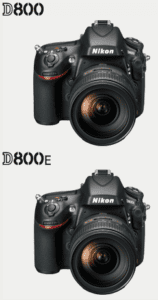 After months of rumors, Nikon has finally announced the D800 and D800E to their latest DSLR lineup. Both these cameras with Nikon FX-format CMOS sensor can deliver an unbelievable 36.3 effective megapixel. The World’s highest (as of 07th Feb, 2012) in terms of effective megapixels. Nikon claims you can enlarge the image as big as A1 poster-sized prints (59.4 x 841.1 cm/23.4 x33.1 inch) at 200 dpi, or crop aggressively to reach the composition you desire all without sacrificing the detail and tonal range of the original.
After months of rumors, Nikon has finally announced the D800 and D800E to their latest DSLR lineup. Both these cameras with Nikon FX-format CMOS sensor can deliver an unbelievable 36.3 effective megapixel. The World’s highest (as of 07th Feb, 2012) in terms of effective megapixels. Nikon claims you can enlarge the image as big as A1 poster-sized prints (59.4 x 841.1 cm/23.4 x33.1 inch) at 200 dpi, or crop aggressively to reach the composition you desire all without sacrificing the detail and tonal range of the original.
Nikon D800 has optimized low-pass filter which reduces false color and moiré when compared to the Nikon D800E, which incorporates an optical filter with all the anti-aliasing properties removed in order to facilitate the sharpest images possible.. This is the only one difference (as claimed by Nikon) between the 2 cameras and perhaps the reason for difference in price too.
The D800/D800E set a new benchmark for high-resolution D-SLR cameras, with crisp clean images across a wide ISO range. Flexibility like this opens up new imaging opportunities for both still photographers and cinematographers alike during the “magic hour”, the time just before dawn or at dusk when available light is often beautiful but scarce. Even at high ISO settings, the camera’s intelligent noise reduction systems manage noise without sacrificing fine details, giving the D800/D800E the edge. High image quality at higher ISOs also means that you can shoot still images handheld more confidently, knowing that fast shutter speeds will reduce blur.


